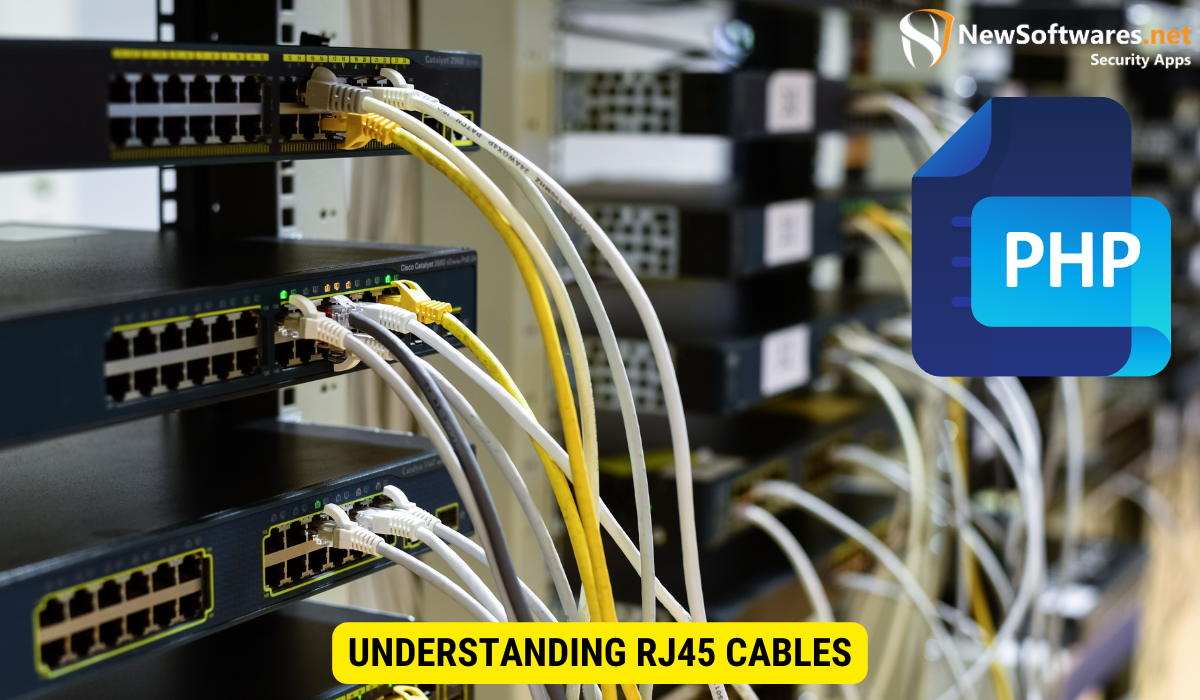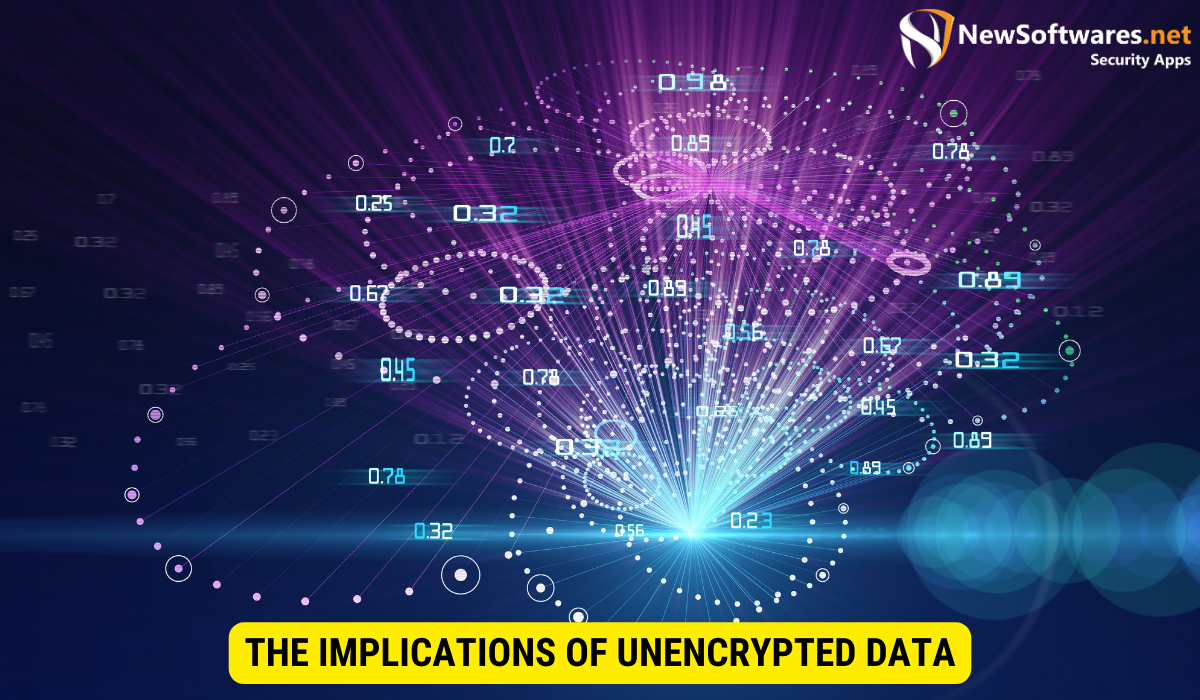By default, data transmitted through an RJ45 cable is not encrypted.
In today’s digital age, data security has become a supreme concern for persons and organizations alike. With the increasing reliance on network connectivity, it is important to understand the intricacies of data transmission and encryption. In this article, we will explore the world of RJ45 cables and whether the data transmitted through them is encrypted. We will also delve into the basics of data encryption, the process of data transmission, and the implications of unencrypted data. So, let’s unravel the mysteries surrounding RJ45 cables and data security.
Understanding RJ45 Cables

RJ45 cables play a crucial role in establishing wired internet connections. Also known as Ethernet cables or network cables, they are named after the registered jack (RJ) connector that they use. These cables consist of eight individual wires that work together to transmit data signals.
What is an RJ45 Cable?
An RJ45 cable, also referred to as an Ethernet cable or network cable, is a common type of cable used for wired internet connections. It is designed to connect devices to a network, allowing them to communicate & share information. The RJ45 cable is widely used in homes, offices, data centers and other environments where a consistent and fast internet connection is required.
These cables are constructed with high-quality materials to ensure optimal performance and durability. The RJ45 connector, which is standardized and widely adopted, provides a secure and reliable connection between the cable and the device.
How Does an RJ45 Cable Work?
When you connect an RJ45 cable to your device, it establishes a physical connection between your device and the network. This connection enables the transmission of data signals, allowing you the way in the internet and communicate with other devices on the network.
The RJ45 cable consists of eight individual wires that are color-coded for easy identification. These wires are twisted together in pairs to reduce interference and ensure reliable data transmission. Each wire within the cable serves a specific purpose, such as transmitting data signals, providing power to devices, or establishing a ground connection.
When data is transmitted through an RJ45 cable, it follows a specific protocol known as Ethernet. This protocol ensures that the data is transmitted in an organized and efficient manner, allowing for high-speed and reliable communication between devices. Ethernet has evolved over the years, with different versions offering varying speeds and capabilities.
It’s important to note that the performance of an RJ45 cable can be affected by various factors, such as cable length, quality, and environmental conditions. Using high-quality cables and properly maintaining them can help ensure optimal performance and minimize data loss or signal degradation.
In conclusion, RJ45 cables are essential components for establishing wired internet connections. They provide a reliable and efficient means of transmitting data signals between devices, enabling seamless communication and access to the internet. Understanding how these cables work can help you make well-versed decisions when setting up or troubleshooting your network.
The Basics of Data Encryption
Defining Data Encryption
Data encryption is the process of encoding data in such a way that it can only be accessed or understood by authorized individuals. It involves using mathematical algorithms to convert plain, readable data into an unreadable format, known as ciphertext.
When data is encrypted, it undergoes a transformation that makes it unintelligible to anyone who does not possess the encryption key. This key is a unique piece of information that is required to decrypt the ciphertext and restore the data to its original form. Without the key, the encrypted data remains secure and protected from unauthorized access.
The process of data encryption relies on complex mathematical algorithms that are intended to guarantee the confidentiality and integrity of the information. These algorithms use a combination of mathematical operations, such as substitution, permutation, and bitwise operations, to scramble the data and make it incomprehensible to anyone without the decryption key.
The Importance of Data Encryption
Data encryption plays a pivotal role in ensuring the confidentiality and integrity of sensitive information. Whether it is personal data, financial transactions, or business communications, encryption safeguards the data from unauthorized access, interception, or tampering.
In today’s digital age, where data breaches & cyberattacks are becoming increasingly common, data encryption is more important than ever. It provide a crucial layer of protection for sensitive information, preventing unauthorized individuals from gaining access to it.
One of the primary benefits of data encryption is that it helps to maintain the privacy of personal and sensitive information. By encrypting data, individuals can have peace of mind knowing that their personal details, for example community security numbers, credit card information, and health records, are secure and protected from prying eyes.
Data encryption is also essential for businesses and organization that handle large volumes of sensitive information. By encrypting data, businesses can comply with industry regulations and standards, like the (GDPR) General Data Protection Regulation and the (HIPPA) Health Insurance Portability and Accountability Act. These regulations require organizations to put into practice measures to protect the confidentiality and protection of sensitive information.
Furthermore, data encryption helps to prevent data tampering and ensures the integrity of the information. By encrypting data, any unauthorized modifications or alterations to the data can be easily detected. If an encrypted file is tampered with, the decryption process will fail, indicating that the data has been compromised.
In conclusion, data encryption is a vital tool for shielding sensitive information and maintaining privacy in today’s digital world. By converting data into an incomprehensible format, encryption ensures that only authorized individuals can access and understand the information. Whether it is personal data or business communications, encryption plays a vital role in conserving the confidentiality and integrity of data.
Data Transmission through RJ45 Cables
The Process of Data Transmission
When you send data through an RJ45 cable, it undergoes a series of steps to reach its destination. First, the data is converted into packets, small units of data that can be transmitted over the network. These packets are then encapsulated with headers and trailers, which contain information about the source and destination of the data. The packets are then transmitted through the individual wires of the RJ45 cable to the intended receiver.
Factors Affecting Data Transmission
Several factors can impact the pace and reliability of data transmission through an RJ45 cable. The quality of the cable, the distance among the devices, electromagnetic interference, and network congestion are some of the key factors that can affect the overall performance.
Encryption and RJ45 Cables
Is Data on RJ45 Cables Encrypted?
By default, data transmitted through an RJ45 cable is not encrypted. The cable itself does not provide any encryption capabilities. However, it is important to note that encryption can be implemented at various layers of the network stack, including the application layer, transport layer, and network layer. Therefore, the encryption of data transmitted through an RJ45 cable depends on the encryption protocols and mechanisms implemented at higher network layers.
The Role of Encryption in Data Transmission
Encryption technologies, like Secure Sockets Layer , Transport Layer Security (TLS), and Virtual Private Networks (VPNs), play a crucial role in securing the data transmitted over networks. These encryption protocols ensure that the data is encrypted before it leaves the device and decrypted by the intended recipient. By encrypting the data, it becomes extremely hard for unauthorized folks to intercept or decipher the transmitted information.
The Implications of Unencrypted Data

Risks of Unencrypted Data Transmission
Unencrypted data transmission poses significant risks to data security. Without encryption, the data is vulnerable to interception, eavesdropping, and unauthorized access. Cybercriminals can exploit these weakness to get unauthorized access to sensitive information, leading to data breaches, identity theft, and financial loss. Organizations that transmit unencrypted data also risk non-compliance with data privacy regulations.
Protecting Your Data: Encryption and Beyond
Encryption is one of the most effective method to protect your data during transmission. By implementing encryption protocols and using secure connections, you can safeguard your sensitive information from prying eyes. Moreover, it is crucial to stay efficient with the latest security best practices, employ strong authentication mechanisms, and regularly update your software and systems to mitigate potential vulnerabilities.
Key Takeaways
- Understand the role of RJ45 cables in data transmission.
- Data encryption ensures the secrecy and integrity of sensitive information.
- RJ45 cables themselves do not provide encryption capabilities.
- Encryption can be implemented at various layers of the network stack.
- Unencrypted data transmission poses significant risks to data security.
FAQs
Q: Can I encrypt data transmitted through an RJ45 cable?
A: Yes, you can implement encryption protocols, such as SSL, TLS, or VPNs, to encrypt the data transmitted through an RJ45 cable.
Q: What are the risks of transmitting unencrypted data?
A: Unencrypted data transmission exposes your data to interception, eavesdropping, and unauthorized access, increasing the risk of data breaches and identity theft.
Q: How can I protect my data during transmission?
A: Implement encryption protocols, use secure connections, and follow security best practices to protect your data during transmission. Regularly update your software and systems to mitigate vulnerabilities.
Q: Is data encryption mandatory for all types of data?
A: The need for data encryption depends on the sensitivity of the data and applicable data privacy regulations. However, encrypting sensitive data is strongly recommended to ensure its security.
Q: Are there any alternatives to data encryption?
A: While encryption is a highly effective security measure, other measures, such as firewalls, intrusion detection systems, and strong access controls, can also enhance data security.
Conclusion
In conclusion, data transmitted through an RJ45 cable is not encrypted by default. However, encryption can be implemented at higher network layers to secure the data during transmission. Encryption technologies play a crucial role in shielding sensitive information from unauthorized access and interception. It is essential for individuals and organizations to understand the importance of data encryption and take proactive measures to safeguard their data. By encrypting data and following best security practices, we can ensure the confidentiality and integrity of our information in an increasingly interconnected world.
